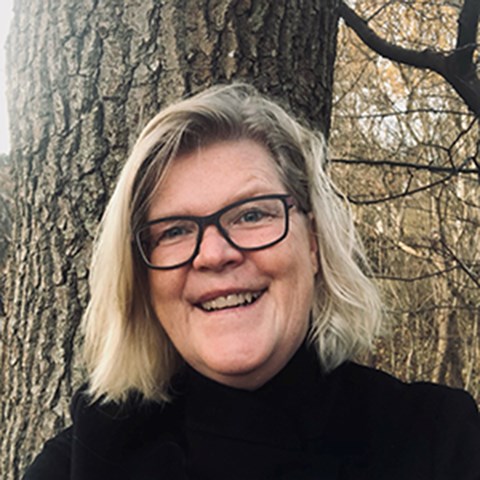Interview with Berit Oscarsson – chair of the programme board

Berit Oscarsson is the chair of the programme board for Mistra Environmental Communication. Berit is a professional communicator herself, and has been the Head of Communications at Naturvårdsverket, the Swedish Environmental Protection Agency, for ten years. What does she think about the research programme, and about communication for a more sustainable future?
What does environmental communication mean, from your perspective?
It means to use communication with the intention to improve the environment – for example, to use communication such that both citizens and decision-makers are well-informed and can take well-founded decisions that contribute to a sustainable future. Environmental communication also means to use communication such that it facilitates and improves people’s participation in societal change.
How does the Swedish Environmental Protection Agency work with environmental communication?
We usually say that we drive and coordinate the environmental work in Sweden, in collaboration with others. There are many actors that work in many different ways towards a transition to a more sustainable world. Communication is an important tool in this context.
We work at a strategic level with collaborative processes and communication planning, but also in a more applied way, to constantly adapt what we are doing to what happens in our environment. We have to do that to stay relevant as a public authority, both for our collaboration partners and the general public.
As the chair of the programme board of Mistra Environmental Communication, what is your task?
As the chair, I am trying to make sure that the programme board supports the research programme in an effective way, by following the work and by contributing whenever that may be needed. We take formal decisions on, for example, the programme plan and some of the budget questions. We might also have to respond to strategic questions that the programme directors raise, as well as to more practical questions that arise from the work in the work packages.
As programme board members, we have different networks that can be useful for the research programme, now as well as later when we are hoping to share and use the results.
Why did it you agree to become the chair of the programme board?
Already when the programme proposal was being developed, we at the Swedish Environmental Protection Agency (SEPA) saw the usefulness of this research programme. So when I was asked if I would be happy to become the chair of the board, I thought this fitted my day-to-day role really well, and there was a clear connection to SEPA’s work.
I think it is really fun to participate in this programme. I have already met many competent people and I am impressed by the energy in the group. The work in the research programme feels really positive, even though we are in the middle of a pandemic that is a challenge for us all.
What will the research programme lead to, in your view?
I think we’ll be learning during the entire duration of the research programme. We don’t have to wait for results – we can gather insights and knowledge and learn from thought models and successful cases. As with all communication, it is a working process.
We need research in environmental communication. In recent years, much has happened in terms of, for example, digitization and globalization, and research in these fields needs to be updated.
I believe also that the programme will identify interesting new questions that we can work with in the future.
What do you see as the biggest challenge in environmental communication?
That communication is relevant and meaningful.
The aim of environmental communication is that it should lead to knowledge, attitude and behaviour change. To achieve this, communication has to be relevant and meaningful, and fit into the recipient’s worldview. That makes communication so complicated and difficult – it’s not sufficient to just tell the truth.
Environmental communication is complex as things have to happen here and now, but also in the long run. In addition, environmental communication is about influencing large societal processes, as communication is being used to move society and the environment into the right direction.
Environmental questions are, in principle, connected to all sectors in society, and are therefore a big issue for democracy.
What does future environmental communication look like?
I think we are in a process of change. We have moved from talking about why something should be done to the question what it is that should be done. I believe that in the future, we’re going to focus more on how we are going to do this.